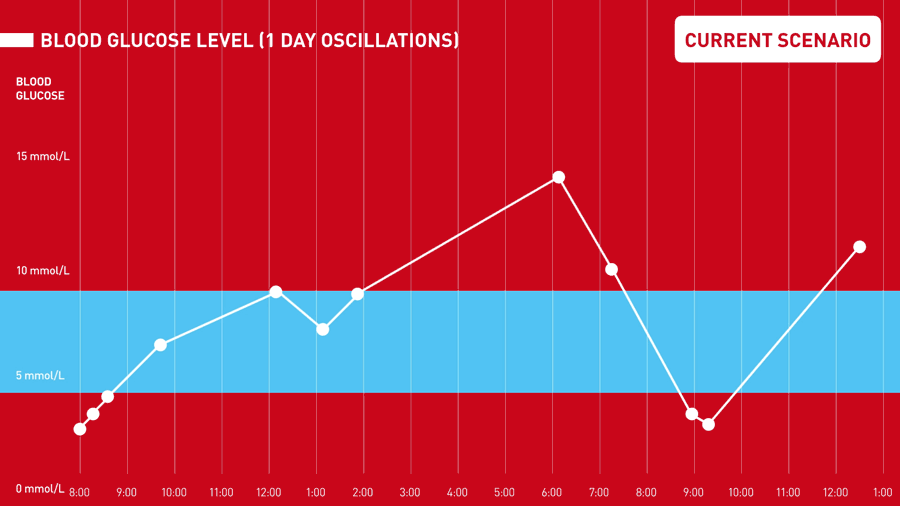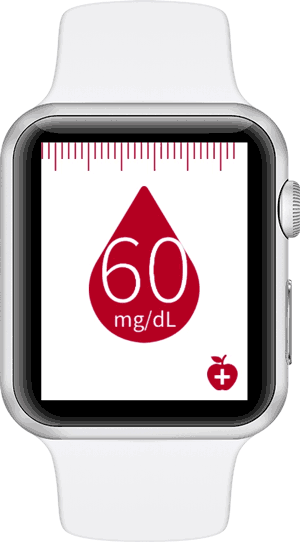
CLIC is a system to help people
with diabetes live a more seamless life. It constantly monitors the Blood Glucose Level so the user doesn't have to.
SKILLS/TOOLS
System Thinking; UX;
UI (Sketch);
Prototyping (Principle).
MY ROLE
I worked on this project with the guidance of my teacher Hugh Dubberly and the always helpful feedback from my colleagues from CCA.
Research + Challenge
Julia Mesrobian is 24 years old and has had diabetes since she was 11. From her experience, I was able to better understand how a diabetes patient lives, and the impact it has on their daily lives.

"I am 24 and have been diabetic since
I was 11. I have been alive with diabetes longer than without, and yet, in my head, the “normal” life is the one I had before."
From a report of one day in Julia's life, I created a map to identify the oscillations she experiences in her Blood Glucose Level (BGL) in a day.

Every time her BGL is at one of the red zones, it means that she needs to do something (pump insulin or ingest something sweet, for example) to deal with it. And at the rest of the time, she is constantly concerned about it.
How might we create a system that keeps track of and regulates the users' Blood Glucose Level, so they don't need to be constantly thinking about it?
One other way to phrase this challenge statement would be:
How might we use technology to make Julia's life the most "normal" as possible?
To better understand the system involved in managing one's BGL, I drafted this Feedback Loop framework, where I was able to identify where in this system I could intervene in order to create a positive impact on it.


Concept

The following graph represents the current scenario and the ideal scenario, with the inclusion of this project's system.
One of the biggest hassles experienced by Julia was the constant need to measure her Blood Glucose Level and the need to calculate ways to compensate whenever it's high or low.
Since there are already BGL measurement devices that are plugged into patients' arms (such as Freestyle Libre, the one used by Julia) and similar style insulin pumps, the system proposed is technologically viable.
The proposed system consists of:


Below is the User Conceptual Model created, that helped me better visualize how the app would work, as well as its capabilities. From this model, I was able to design the screens in a simple way, but addressing every feature the app should have.


The Product

Alerts & Notifications

The main interactions happen at this point. The app will warn its users anytime their BGL is high or low, and suggest possible actions to control it. The animation plays an important role in representing the urgency for some action to be taken.

During a usability testing of the early concept, I realized that in the way I was designing it, users would need to be constantly checking their BGL in the app. And that was the opposite of this project's goal - to make diabetics less stressed, by making them not worried about keeping track of their BGL. That's how I realized the importance of the push notifications to this system.


Next Steps
The next steps of this project would be to make more usability testings to validate it, and iterate accordingly. So far, I got this feedback, from Julia:
"You understood very well what our daily struggles were and you efficiently addressed them. [...] I would love and really want to purchase the app."







